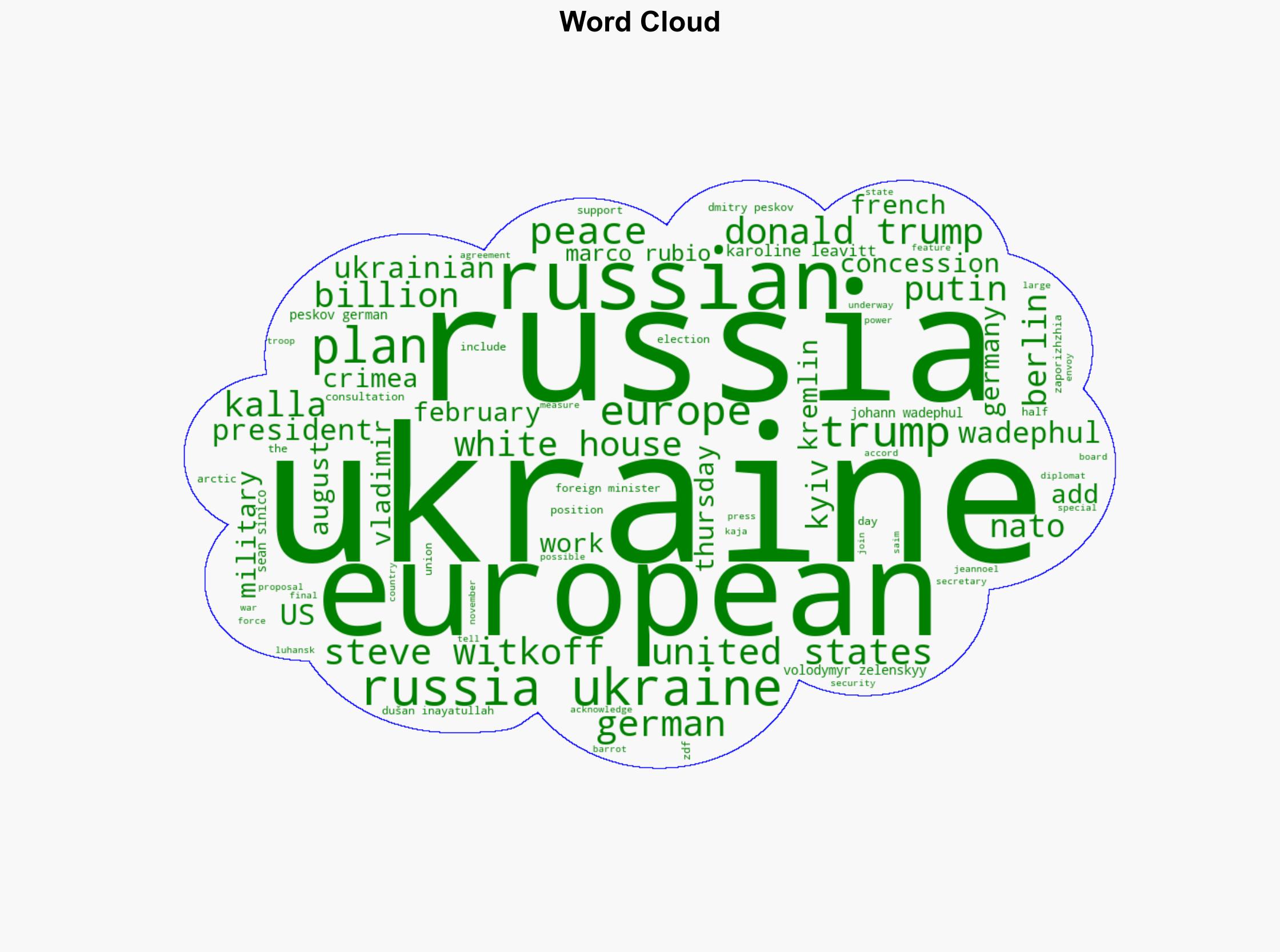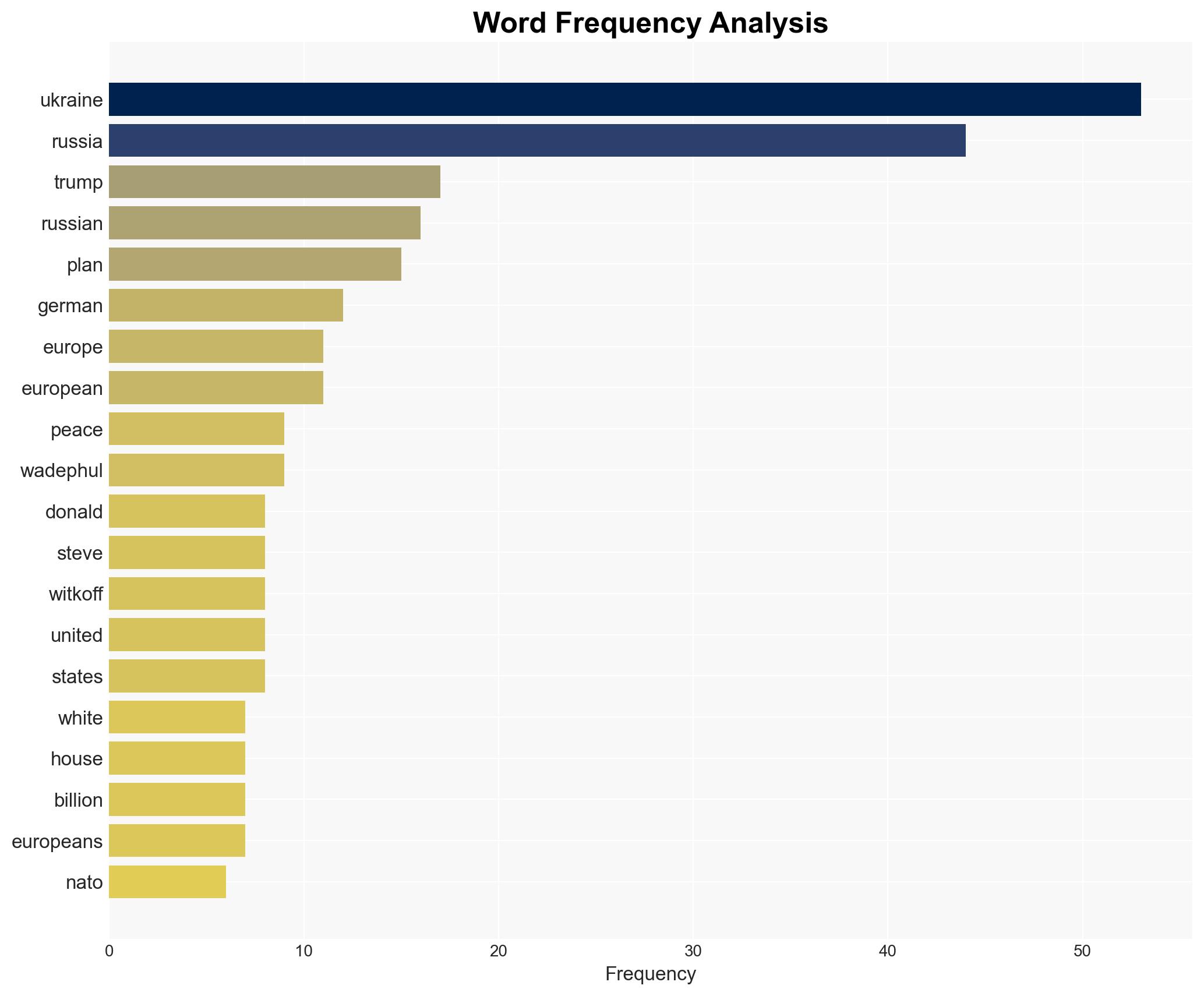Trump’s peace plan for Ukraine What we know so far – DW (English)
Published on: 2025-11-21
AI-powered OSINT brief from verified open sources. Automated NLP signal extraction with human verification. See our Methodology and Why WorldWideWatchers.
Intelligence Report: Trump’s Peace Plan for Ukraine
1. BLUF (Bottom Line Up Front)
The most supported hypothesis is that Trump’s peace plan is primarily designed to favor Russian interests, potentially at the expense of Ukrainian sovereignty and territorial integrity. Confidence Level: Moderate. Recommended action is to closely monitor the plan’s development and engage with European allies to ensure any peace proposal aligns with international law and respects Ukraine’s sovereignty.
2. Competing Hypotheses
Hypothesis 1: The peace plan is a genuine effort by Trump’s administration to end the conflict in Ukraine by proposing a balanced compromise that includes territorial concessions and security guarantees.
Hypothesis 2: The peace plan is a strategic move to realign U.S. foreign policy towards Russia, prioritizing U.S.-Russia relations over Ukraine’s territorial integrity, thereby favoring Russian geopolitical interests.
The second hypothesis is more likely due to the plan’s emphasis on concessions that align with Russian objectives, such as territorial cession and NATO restrictions, and the lack of broad European support.
3. Key Assumptions and Red Flags
Assumptions: The plan assumes that territorial concessions will lead to lasting peace and that Russia will adhere to any agreements made. It also assumes that European nations will eventually support the plan.
Red Flags: The lack of transparency in the plan’s development, limited European involvement, and the potential for Russian deception in honoring agreements.
4. Implications and Strategic Risks
The plan could lead to significant geopolitical shifts, weakening NATO’s influence and emboldening Russia. It risks setting a precedent for resolving conflicts through territorial concessions, potentially encouraging further aggression by Russia or other states. Economically, the plan’s sanction relief and asset utilization could undermine current international sanctions regimes.
5. Recommendations and Outlook
- Engage with European allies to form a unified stance on the peace plan, ensuring it aligns with international norms.
- Increase diplomatic efforts to support Ukraine’s sovereignty and territorial integrity.
- Monitor Russian compliance with any agreements to prevent strategic deception.
- Best Scenario: A revised peace plan that respects Ukraine’s sovereignty and gains broad international support.
- Worst Scenario: The plan is implemented, leading to a weakened NATO and increased Russian influence in Eastern Europe.
- Most-likely Scenario: The plan faces significant opposition from European nations and Ukraine, leading to stalled negotiations.
6. Key Individuals and Entities
Donald Trump, Steve Witkoff, Marco Rubio, Volodymyr Zelenskyy, Karoline Leavitt, Vladimir Putin, Kaja Kallas, Jeannoel Barrot, Dmitry Peskov, Johann Wadephul.
7. Thematic Tags
Regional Focus, Regional Focus: Eastern Europe, U.S.-Russia Relations, NATO, Ukraine Sovereignty
Structured Analytic Techniques Applied
- Causal Layered Analysis (CLA): Analyze events across surface happenings, systems, worldviews, and myths.
- Cross-Impact Simulation: Model ripple effects across neighboring states, conflicts, or economic dependencies.
- Scenario Generation: Explore divergent futures under varying assumptions to identify plausible paths.
Explore more:
Regional Focus Briefs ·
Daily Summary ·
Support us





